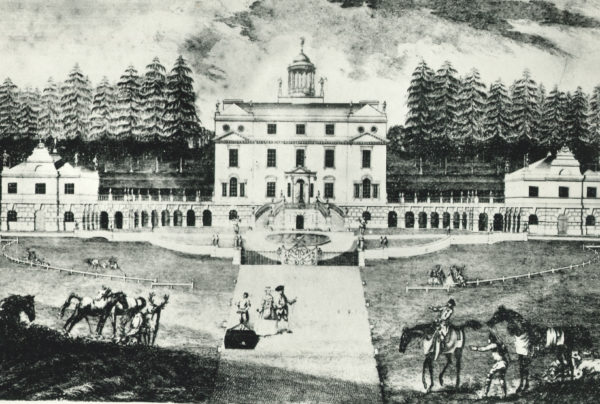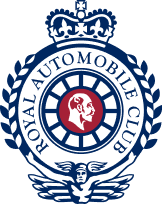History of Woodcote Park

The Woodcote Park estate is mentioned in the 1086 Doomsday Book as part of a larger property in the possession of the Abbey of Chertsey. [Over a number of centuries, it attracted variant spellings such as ‘Wudecot’, ‘Wodecot’, and ‘Woodcot’.] Generations of the Marston and Mynn families then owned it from the mid-15th century until Richard Evelyn, brother of the famous 17th century diarist John, acquired it in 1648 and built the estate’s main mansion that survived until the 20th century. From 1691, it attracted a large number of custodians, including members of the Baltimore and De Tessier families. Eventually, the Royal Automobile Club bought Woodcote Park in 1913, from Herbert Brooks, a director of the Bank of England.
Club members had barely moved into their new country retreat before the War Office commandeered part of the estate (‘The ‘Ridge’) for a military camp for the University and Public Schools Brigade; some 11,000 men were accommodated in its wooden huts in the early years of the war. Then in 1916, the camp was handed over to the Canadian Army; they used it as their main convalescent hospital (and other Commonwealth countries too). When the war finished, the War Office, kept a training camp on the site, nonetheless, until 1923. During the Second World War, 110 acres of the Woodcote Park estate were ploughed up for food production that included wheat, barley, oats, and potatoes.
Woodcote Park had been purchased for members to drive down from London, ostensibly, to enjoy its many sporting and leisure facilities. Golf has always been the main attraction: shortly after acquiring the estate, twenty-seven holes (in three loops) were devised by the renowned golf-course designer W. H. Fowler. And by 1931, two full 18-hole courses, called the ‘Old’ and ‘New’, had been completed. The ‘Coronation’ course opened in 1953, partly as a result of the New course having been ploughed up for those wartime purposes.
In 1934, the main clubhouse, tragically, was gutted by fire. Beautiful paintings ascribed to Rubens, Verrio, and Zucarelli were lost. And splendid groined arches, a wonderful example of early craftsmanship in brickwork, also perished. Remarkably, nobody was hurt but very little remained of the Evelyn mansion. Mewès and Davis – the architects renowned for the Pall Mall clubhouse – were commissioned to rebuild it, almost as a ‘replica’ of the Evelyn mansion. The new clubhouse opened its doors in 1936.
In 1963, Lord Mountbatten, the Club’s President, convened a day of celebration to mark the Club’s ‘Golden Jubilee’ of ownership. But by the late 1970s, Woodcote Park was in considerable need of investment and came close to being sold off. A programme of renovation and upgrades was instigated in the 1980s; that timetable included the opening, for example, of the sizeable Cedars Sports complex in 1989.
Woodcote Park, set in 350 acres of prime Surrey countryside, is today thriving once again. Club members and their guests can there enjoy many great motoring events, as well as a range of sporting pursuits, including swimming, tennis, squash, running, and cycling.


